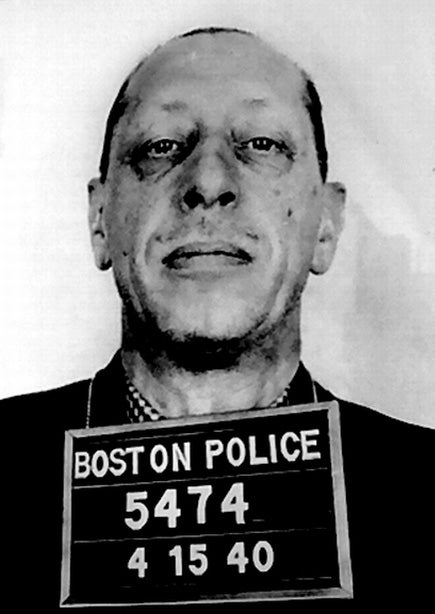MYTH #8: A mug shot offers proof of composer Igor Stravinsky’s arrest by the Boston Police for desecrating a national symbol after conducting a performance of his own arrangement of “The Star-Spangled Banner” with the Boston Symphony.
CORRECTION: The supposed mug shot is actually part of Stravinsky’s 1940 visa application for residence in the United States. Stravinsky did indeed create an arrangement of the U.S. national anthem and conducted it—not only in Boston, but in concerts throughout the U.S.—but his initial version (one of four he would eventually make of Key’s song) is dated July 4, 1941 (more than a year after the date on the “mug shot”). The well-known image is thus not associated with an arrest at all, but it is true that Stravinsky’s anthem was controversial. This controversy had little to do with the music, however, and everything to do with suspicion of things Russian during and after World War II.

The visual is more than compelling… a haggard looking image of Russian composer Igor Stravinsky with a sign hanging crookedly around his neck emblazoned with numbers and the words “Boston Police.” It gives the immediate impression of a mug shot taken to document the arrest of a crime suspect. Even before the Internet, the image circulated in a blurry photocopy among music historians, but once rare it’s now readily available online.
However, the mythical image also contains the evidence of its own factual undoing.
The last row of numbers indicates the date April 15, 1940, which is more than a year prior to Stravinsky’s first arrangement of the U.S. national anthem. He completed that draft on July 1, 1941, but in a nod to American patriotism and his soon to be adopted country, Stravinsky dated the draft July 4 in celebration of Independence Day. Moreover, the performances the composer conducted with the Boston Symphony that supposedly sparked his arrest did not occur until January 13 & 14 of 1944. Finally, a real mug shot would have both frontal and profile views. Instead, this image is for the composer’s visa application. He would establish residency in 1940 and U. S. citizenship in 1945.
Yet there are certain truths in the story of Stravinsky’s “illegal” anthem. Stravinsky did in fact arrange the U.S. national anthem and, within the charged political atmosphere of World War II, his harmonization was controversial. Further the composer was threatened with a $100 fine for violating a state of Massachusetts ordinance for arranging the anthem in a non-traditional manner and the parts to his arrangement were seized from BSO stands to prevent them being used for a radio broadcast that Stravinsky would conduct. Stravinsky was neither arrested nor fined; instead he conducted a more traditional arrangement for the broadcast.
Although considered a subversive “revision” by some, contemporary interpretations of his anthem arrangement had little to do with Stravinsky’s music. Actually listening to his version (click graphic above) reveals that Stravinsky left the traditional melody and rhythm of the song unchanged. Likewise the words are Francis Scott Key’s own, all that has changed is the accompaniment. While a seventh chord adds some drama and spice to the final phrase (listen especially to the word “land”), Stravinsky’s arrangement is gorgeous, not modernist or offensive. Rather it evokes the harmonies of early American psalmody and was one of my personal favorites in the Poets & Patriots recording project. Stravinsky himself said that he “tried to express the religious feelings of the people of America,” which is a striking departure of aesthetics from a composer who publicly doubted music’s ability to be expressive at all. For me, one of the more powerful aspects of the setting is the unison in which all voices unite for the final word of each verse—”free.” It’s hymn-like beauty is striking in our recording.
What the controversy and confusion over Stravinsky’s anthem arrangement reveals is the power of social and political context to interpretation. Stravinsky’s Russian heritage made him an object of suspicion during World War II and the subsequent Red Scare. While foreign-born classical musicians had used “The Star-Spangled Banner” to perform their patriotic support of America’s war efforts in both World War One and Two, Stravinsky’s arrangement could not overcome such suspicions. Instead, the arrangement seemed to call the composer’s loyalty into question.
Those wishing to know more about Stravinsky’s four arrangements of Key’s anthem should read H. Colin Slim’s magisterial article on the topic—”Stravinsky’s Four Star-Spangled Banners and His 1941 Christmas Card” published in The Musical Quarterly 89:2/3 (Summer-Fall, 2006), 321–447 (click here for JSTOR preview). The Stravinsky quote above is taken from page 364.
If you’re interested in performing Stravinsky’s piano-vocal version yourself, it’s available in our Star Spangled Songbook in paperback or hardcover editions. The associated recordings are available in a collectible CD set or online via Amazon, iTunes, GooglePlay, and Spotify, etc.
SPANGLED MYTHCONCEPTIONS SERIES, by Mark Clague, Ph.D.
Previous | Overview


